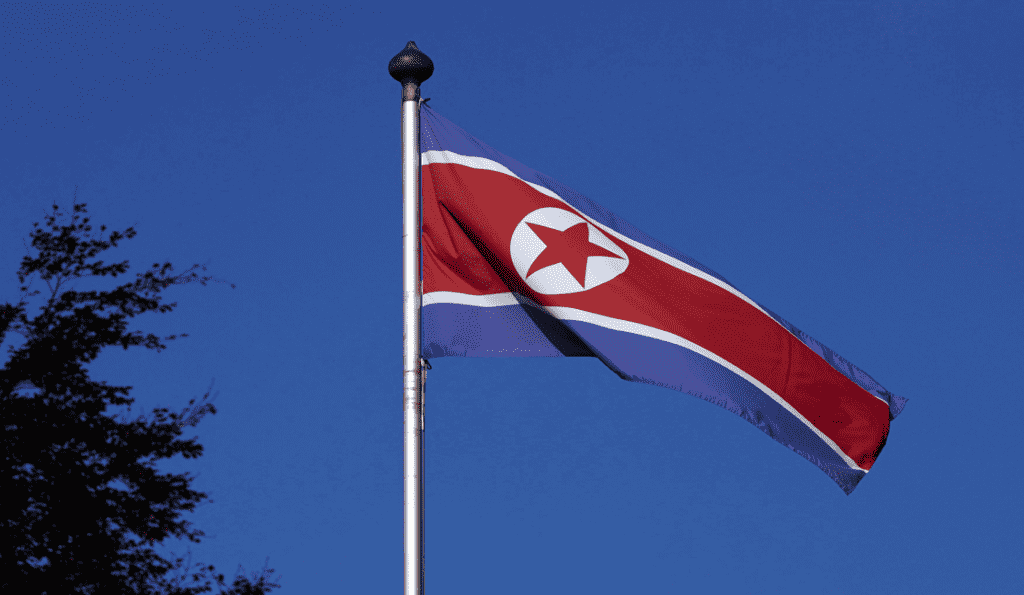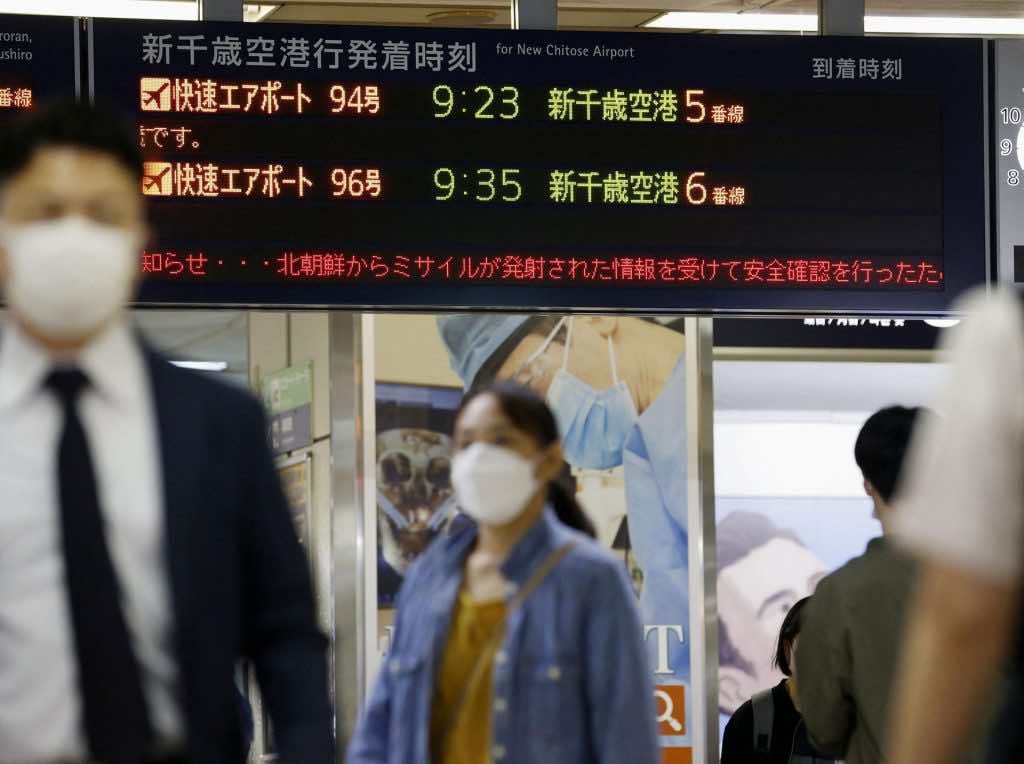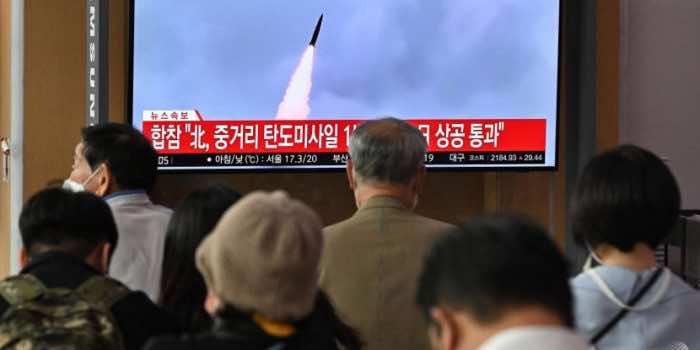On Tuesday, North Korea launched a ballistic missile over Japan for the first time in five years, warning residents to take cover and a temporary halt to train operations in northern Japan.
As the missile seemed to fly over and past Japanese territory before crashing into the Pacific Ocean, the Japanese government advised civilians to take cover.

It was the first North Korean missile to follow such a trajectory since 2017. Tokyo said its 4,600 km (2,850 miles) range was possibly the greatest for a North Korean test flight, often “lofted” higher into space to avoid passing over neighboring nations.
The latest launch was Pyongyang’s fifth in ten days, as the US, South Korea, and Japan exercised their military capabilities. Last week, the three countries held trilateral anti-submarine exercises, including a US aircraft carrier visit to South Korea for the first time since 2017.

Recent tests have elicited relatively subdued responses from Washington, which is preoccupied with the Ukraine crisis and other domestic and international concerns. Still, the US military has increased its presence in the region.
Tokyo stated that no action was taken to shoot down the missile. However, defense Minister Yasukazu Hamada indicated that Japan would not rule out any alternatives, including retaliatory capabilities, as it seeks to improve its defenses in the wake of North Korean missile launches. South Korea also said it would strengthen its military and expand allied cooperation.
The US fiercely criticized North Korea’s “dangerous and reckless” decision to send a long-range ballistic missile over Japan.
“This action is destabilizing and shows the DPRK’s blatant disregard for United Nations Security Council resolutions and international safety norms,” National Security Council spokesperson Adrienne Watson said in a statement, using the initials for North Korea’s official name.

US Secretary of State Antony Blinken “strongly criticized” the North’s recent test during phone conversations with his South Korean and Japanese counterparts. The launch disobeyed resolutions passed by the UN Security Council that imposed sanctions on Pyongyang due to its missile and nuclear programs.
According to Tokyo and Seoul officials, the missile traveled 4,500 to 4,600 kilometers (2,850 miles) and reached a maximum height of about 1,000 kilometers.
The Joint Chiefs of Staff (JCS) of South Korea reported that it seemed to be an IRBM launched from the Jagang Province of North Korea. Recently, North Korea has conducted several tests, including launching several “hypersonic” missiles.
East Japan Railway Co. reportedly suspended running trains in the northern regions as a result of the test, according to Japanese broadcaster NHK.
The early flight characteristics show the missile was the Hwasong-12 IRBM, which North Korea unveiled in 2017 as part of its claimed plan to strike US military bases in Guam, claims Kim Dong-yup, a former South Korean Navy officer who now teaches at Kyungnam University.

In 2017, the Hwasong-12 was used in overflight testing in Japan. According to Kim, it was also fired in a test in January from Jagang Province.
Ankit Panda of the Carnegie Endowment for International Peace in the United States claims that North Korean scientists can test missiles under more realistic circumstances by launching them at a vast distance.
“Compared to the usual highly lofted trajectory, this allows them to expose a long-range reentry vehicle to thermal loads and atmospheric reentry stresses that are more representative of the conditions they’d endure in real-world use,” he said.


